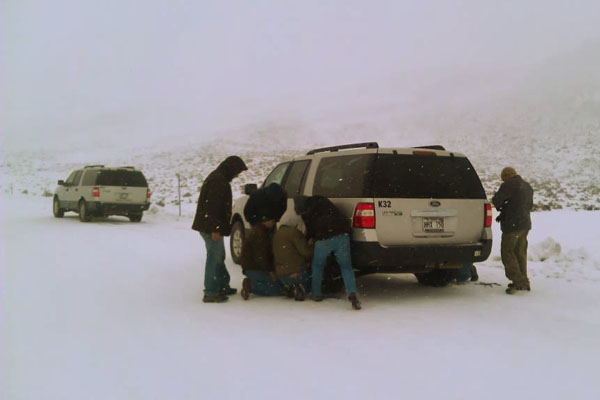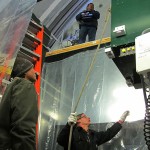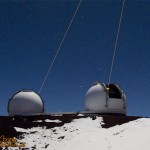By all accounts it was bad.
I was scheduled to go up, but ended up not joining the summit crews today. Just as well, they did not make the summit. The crew made it partway up, to about 12,000ft., into snow and freezing rain. Not a lot of snow, but a lot of slick ice, altogether much worse.
I talked to a few guys and the descriptions ranged from nasty to miserable. Pete remarked that his hair and pants were slowly icing up in the freezing rain. Kirk recalls parking the pickup to put on the chains, when getting out Michaela noted the vehicle was still moving, sliding sideways on the ice.
The road is closed to all vehicles! This is quite unusual, normally it is closed to the public when bad weather dictates, but remains open to observatory vehicles. Our trucks are some of the few vehicles on the island equipped with bad weather kits that include chains and other useful gear for dealing with ice and snow. Watching island boys with no winter weather experience trying to drive on ice can be rather entertaining.
I am scheduled for tomorrow as well. I will read the early morning reports from the rangers and decide if it worth my time. No point in going up just to spend the day sitting at Hale Pohaku. I may as well get something productive done at headquarters. Thus I pass along a photo from fellow Keck engineer Ean James…




